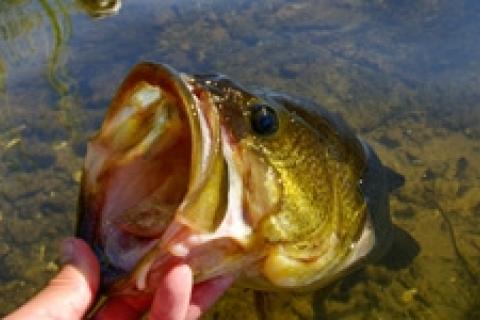
 Clear water comes with its own set of rules. Fish can be finicky, spook easily or drop down deep. Learning to adapt is a key concept that can greatly increase fishing success during these times — and help you overcome the clarity conundrum.
Clear water comes with its own set of rules. Fish can be finicky, spook easily or drop down deep. Learning to adapt is a key concept that can greatly increase fishing success during these times — and help you overcome the clarity conundrum.
Downsize Baits
Big, flashy lures certainly work well in stained or muddy water conditions, but small is the word when working the clear stuff. Since fish can thoroughly inspect a lure when visibility is great, give them something that looks unnatural and they will almost certainly shy away from it.
A downsized bait will not only appear more life-like in the water, but its action and motion will be much more natural. This is key to getting bit.
Mini crankbaits, micro-plastics and thin profile baits all work well under these conditions. In terms of bass, tossing a 2-inch jerkbait, small tubes or lizards, or even dragging a drop-shot rig with a pint-sized bait will up your odds for getting bit.
Consider Color
Natural hues work best when working clear water as they lend themselves to a more natural appearance. Try your best to imitate the color of prey in the lures you choose, whether it is the brown and orange of a crawfish, or the white of a shad. In my experience, a handful of colors seem to work best when plying clear water — black, brown, white, gray, smoke, silver, and green pumpkin.
Utilize Livebait
What better way to catch finicky fish than with Mother Nature's very own kind. For those days when you can't buy a clear water fish, give live bait a try. Worms, minnows, leeches, crawfish or frogs — if these treats can't fool a fish, chances are nothing will. Choose light wire hooks in the smallest size you can get away with in order to keep the presentation as natural as possible. Circle hooks work well with many live baits and diminish the chance of gut-hooked fish.
Look at Line
Fluorocarbon line is an excellent choice for these conditions, as it becomes virtually transparent when viewed below the waters surface. Many anglers are using a fluoro leader (3-4 feet) that is tied to their main backing of mono or braid — this can save you a considerable amount of money over the course of a season.
Probe the Depths
Increased light penetration and angling pressure on clear bodies of water will often push fish deep. A quick scan of the shallows will usually confirm this. If this is the case on your home lake, working drop offs, deep weedlines, or off shore humps can get you back on the fish.
Concentrate on Your Casts
Long distance casts can be your best friend when fishing clear water. They will allow you to keep far away from fish, which will lessen your chance of being spotted first. The more distance you can put between your boat and the fish the better.
Keep casts low to the surface in order to minimize loud and unnecessary splashes. Pitching and flipping techniques are useful for this, and will allow you to present your bait in as natural a way as possible.
Always cast off to the side of fish, and never directly on top of them if sight fishing. By doing so, you can "lead" the fish to your bait in a natural manner, and increase your chances for success.
- 2688 views

